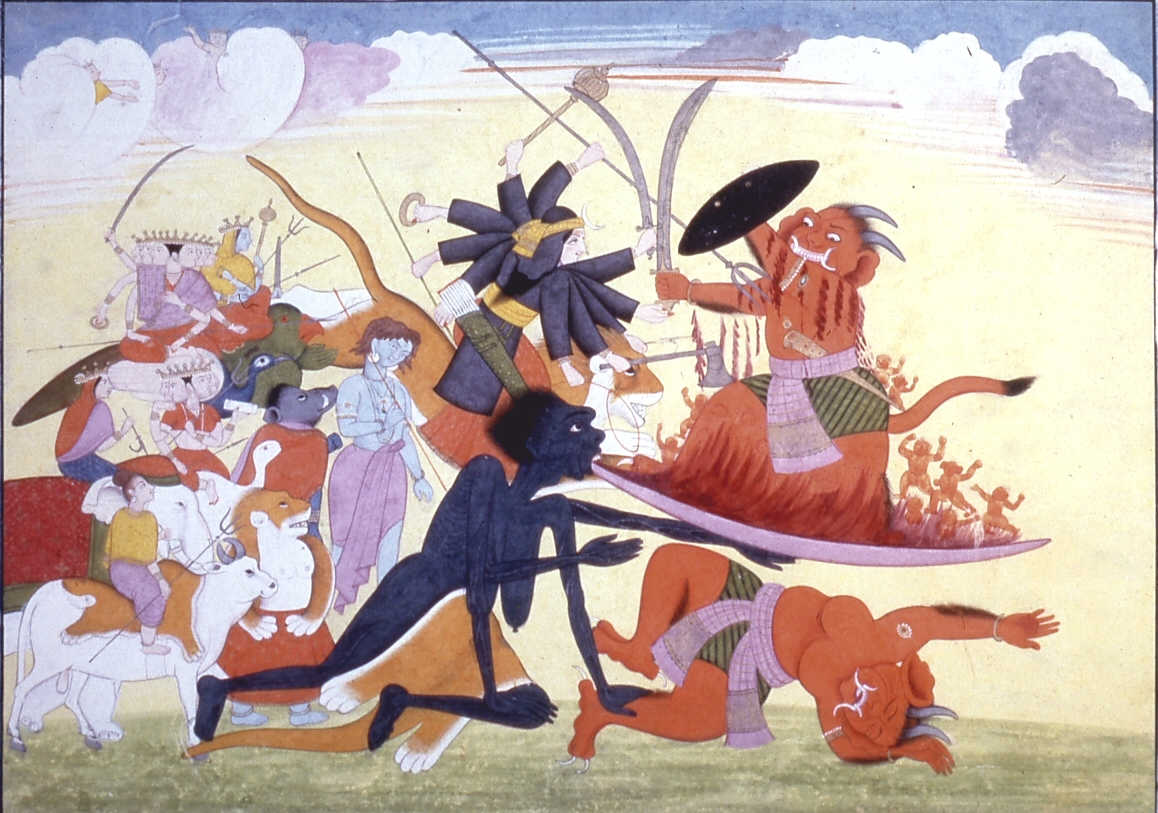Kali Conquers Raktabija
(India, Nepal, and Tibet)
Devi, the Great Goddess of the Hindu traditions, embodies power and energy ("shakti"), using her strength to defeat demons. The demon Raktabija, however, presented a special challenge. Every time a drop ("bija," “seed”) of his blood ("rakta") fell to the ground, a clone of the demon arose. Devi—seen here riding her lion, energetically wielding weapons in her many arms—created a fearsome emanation of herself, the emaciated goddess Kali. As Kali lapped up Raktabija’s blood, she was able to defeat him.
Provenance
Provenance (from the French provenir, 'to come from/forth') is the chronology of the ownership, custody, or location of a historical object. Learn more about provenance at the Walters.
John and Berthe Ford, Baltimore [date and mode of acquisition unknown]; Walters Art Museum, 2001, by gift.
Exhibitions
| 2001-2003 | Desire and Devotion: Art from India, Nepal, and Tibet in the John and Berthe Ford Collection. The Walters Art Museum, Baltimore; Santa Barbara Museum of Art, Santa Barbara; Albuquerque Museum, Albuquerque; Birmingham Museum of Art, Birmingham; Hong Kong Museum of Art, Hong Kong. |
Geographies
India, Himachal Pradesh, Guler (Place of Origin)
Measurements
8 5/8 x 11 3/8 in. (21.9 x 28.9 cm)
Credit Line
Gift of John and Berthe Ford, 2001
Location in Museum
Not on view
Accession Number
In libraries, galleries, museums, and archives, an accession number is a unique identifier assigned to each object in the collection.
In libraries, galleries, museums, and archives, an accession number is a unique identifier assigned to each object in the collection.
W.864


